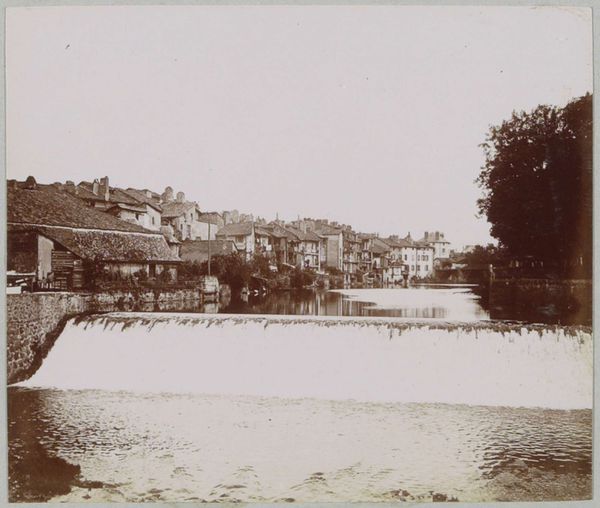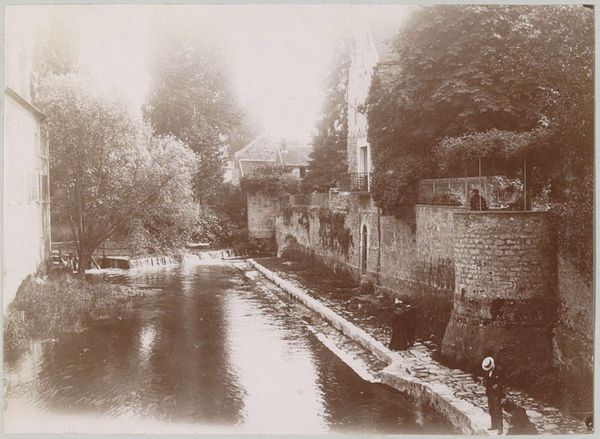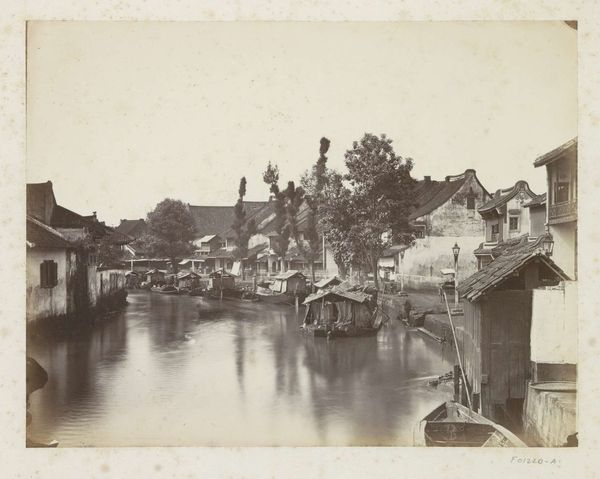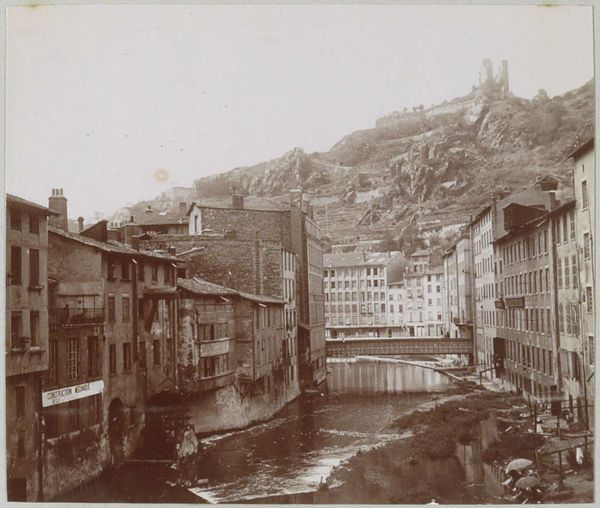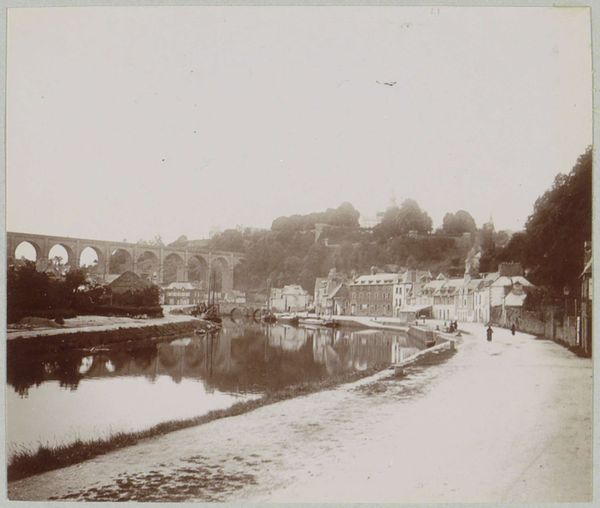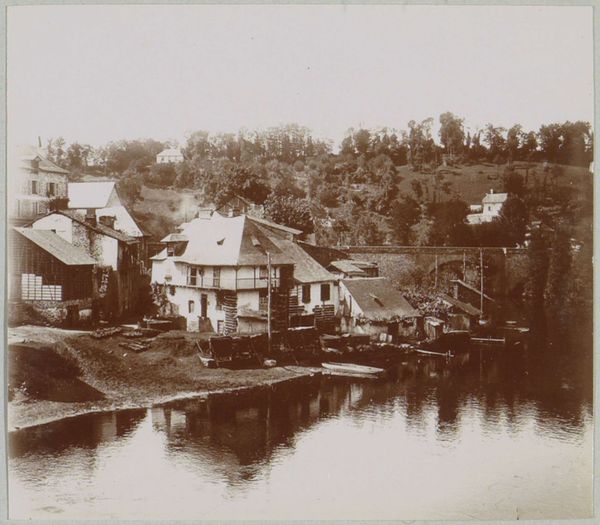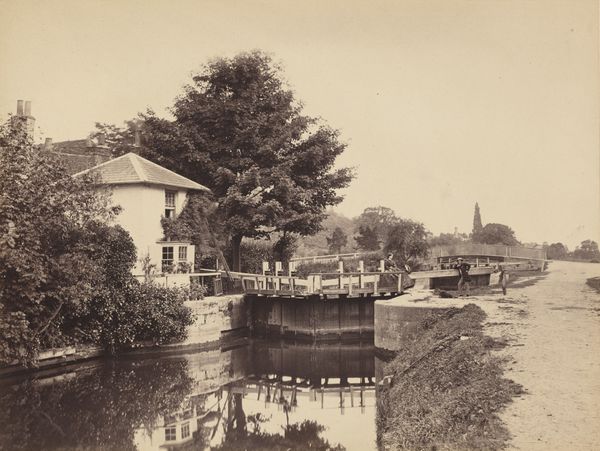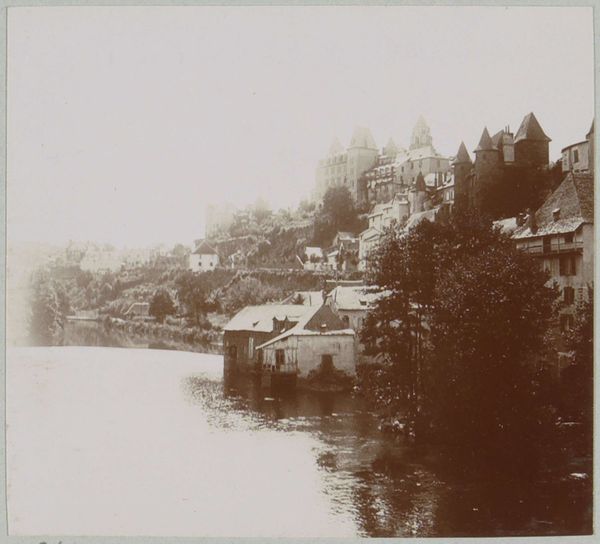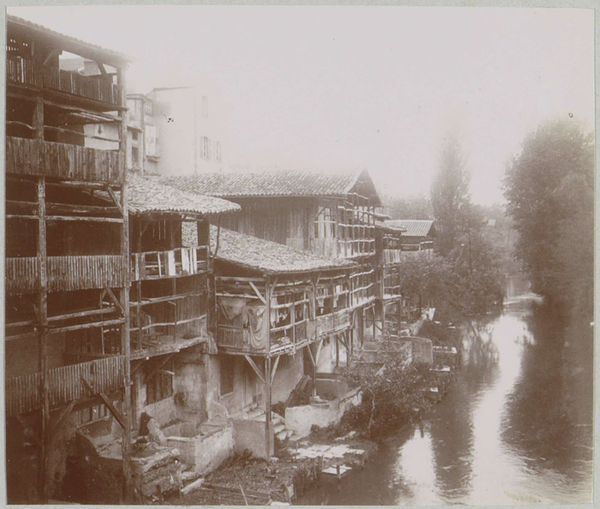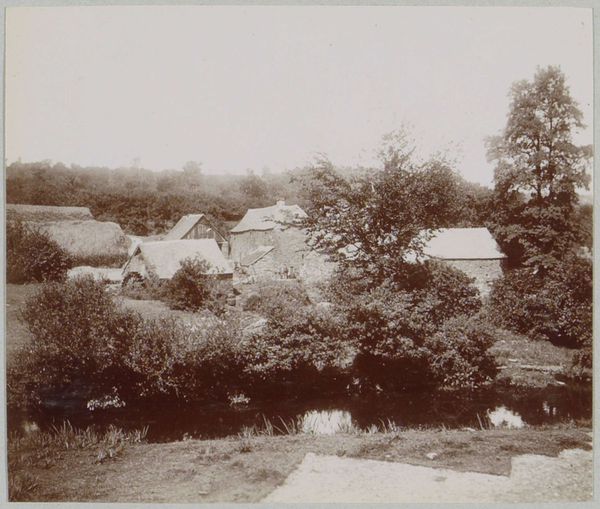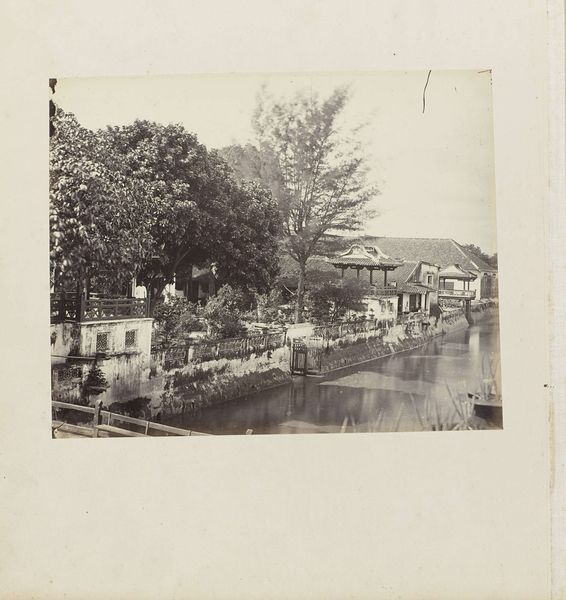
Dimensions: height 69 mm, width 82 mm
Copyright: Rijks Museum: Open Domain
Curator: I'm struck by the stillness of the water; it gives the entire scene a calm, almost melancholic quality. Editor: We're looking at "Huizen aan de Jordanne in Aurillac," a photographic print created by the artist Delizy around 1903. It's part of the Rijksmuseum collection. What intrigues me is the very public facing nature of this scene; it depicts an ordinary row of houses, presenting everyday life to the viewer. Curator: Indeed, and it evokes questions of access and visibility, doesn't it? Who are the houses available to, what is public and what is private in the turn of the century? The repetitive architecture is reminiscent of an assembly line and all the cultural theory which it inspires. I see these buildings as containers; their design enforces a certain social narrative, framing domestic lives for public viewing in a way not dissimilar to how, decades later, film or television would present the domestic sphere. Editor: The light here feels very indicative of a specific socio-political period. Photography, like this one, offered a new way to document urban environments and was influenced by wider movements in art and social reform. It captures the kind of urban landscape that, with its hints of dilapidation alongside everyday activity, would become fodder for social reformers. The sepia tone also serves to further contextualize the period of the piece as a reflection on urbanization's impact on domestic environments. Curator: Exactly. The Jordanne River here becomes more than just a geographical element. It acts as a dividing line, creating both physical and metaphorical boundaries between the public viewer and the private inhabitants. Consider how women would have occupied such a scene and how the architecture reinforces social hierarchies and gender roles. Editor: I’d agree. I think what we’re witnessing through Delizy's lens is not simply a depiction of buildings by a river, but rather a statement about how society’s structures – be they architectural, governmental or interpersonal – intersect, overlap and define people’s lives. Curator: A poignant reminder of how deeply our personal stories are intertwined with broader socio-political landscapes, indeed. Editor: This photograph reminds us to always look beyond the immediate aesthetics and into the layers of meaning shaped by their time.
Comments
No comments
Be the first to comment and join the conversation on the ultimate creative platform.
